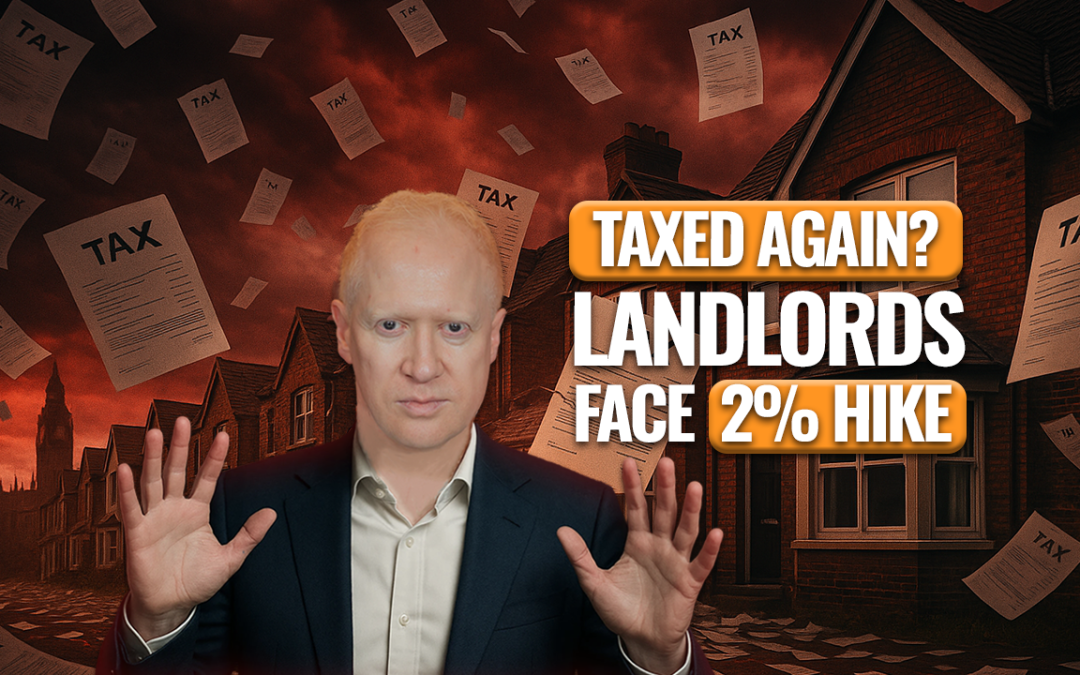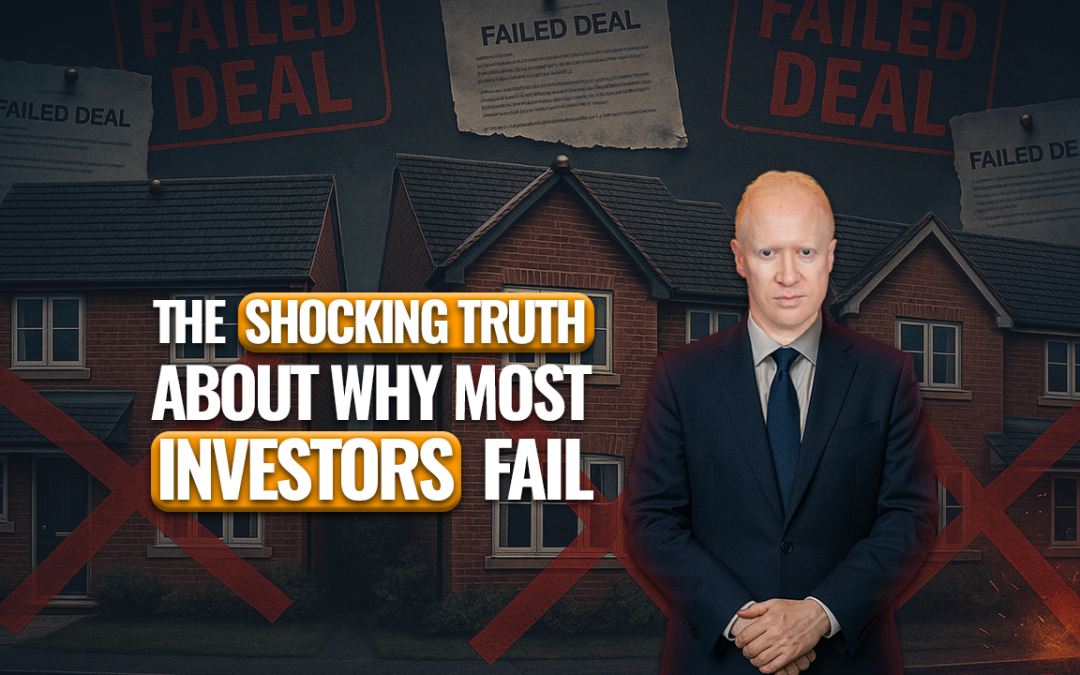Let me be direct, rent to rent will come to an end in 2026. Whether people like hearing that or not, it does not change the reality. The numbers no longer stack, the risk has overtaken the reward, and the regulation coming into force will crush already thin profit margins.
There was a time when R2R was a practical stepping stone strategy for people with little capital. That time has now passed.
And I know that statement is going to upset some people. I know there are mentors and trainers still promoting rent to rent as a smart way into property. I know some people have built their entire identity around being a “rent to rent expert”. But I am here to tell the truth and, more importantly, to protect investors from unnecessary risk.
If you are thinking of starting rent to rent, or worse, if you are already trapped in it, you need to understand what is coming and why you must evolve immediately if you want to build long-term wealth.
Why Rent to Rent Worked Before But Not Anymore
I am not here to say rent to rent never worked. It did. Back in 2010–2016, it was a clever solution in a market full of tired landlords, weak regulation and low operating costs. You could control a property, turn it into an HMO, and generate cash flow without a mortgage. It was a fast stepping stone for people with little capital.
Back then:
- Landlords welcomed guaranteed rent
- Councils were not aggressively enforcing HMO rules
- Utility bills were affordable
- Local licensing did not exist in most areas
- Council tax was banded per property, not per room
- Competition was low
It was simple: secure a 5-bed house, rent it room by room, clear £1,000 per month. Easy. But that world no longer exists. Markets evolve. Regulations tighten. Costs rise. Rent to rent has been squeezed from both sides: lower income, higher costs.
The Reality in 2025 – Profit Has Collapsed
Over the last five years, rent to rent profit margins have been shrinking steadily. Today, the average rent to rent deal makes around £300–£500 profit per month before unexpected costs. One boiler breakdown, one eviction, one compliance fine, and your entire year’s profit is gone.
Operating costs have gone up dramatically:
- HMO licensing and compliance inspections
- Fire doors, alarms and safety certificates
- Higher council tax bills due to rebanding
- Rising utilities
- Furniture and maintenance
- Void periods and tenant churn
- Letting platform fees for serviced accommodation
If you are operating rent to rent today, you are one bad tenant away from losing money. The risk now outweighs the reward, and that is before considering the new tenancy legislation hitting in 2026, which will be the final blow.
The Knockout Punch: Legislation in 2026 Destroys Rent to Rent Cash Flow
The Renters Reform Bill fundamentally changes the power dynamic between landlords and tenants. The government is abolishing Assured Shorthold Tenancies (ASTs) and moving to open-ended periodic tenancies.
This means:
- Tenants can leave at short notice
- You lose predictable cash flow
- Rent arrears become harder to challenge legally
- Section 21 eviction is gone
- Your risk increases while your control decreases
For rent to rent operators, this is catastrophic. Your rent to the landlord stays fixed. Your tenant income becomes unstable. One month of voids and your deal moves into negative cash flow.
Rent to rent + tenancy reform = financial instability. It is a broken model.
Serviced Accommodation Rent to Rent Will Collapse Next
Some investors believe they can escape this by moving into serviced accommodation (SA). That is a dangerous assumption. SA is even riskier today than HMOs.
Why?
- Councils now require planning permission for SA
- Use Class C5 and Article 4 restrictions are expanding
- Tourism taxes are being introduced in Wales
- Licensing is enforced in Scotland
- Mortgage lenders are banning short-term lets in residential properties
- Guest competition is fierce
- Platform fees and cleaning costs crush margins
If you think rent to rent SA is the answer, you are jumping from a leaking boat into a sinking one.
The Hidden Nightmare Problem with Rent to Rent: No Security
Rent to rent looks like property investing, but it is not. It is high-risk property management without ownership. You carry 100 percent of the liability and zero long-term gain.
With rent to rent:
- You control the property but do not own it
- Your agreement can be cancelled
- The landlord can sell or increase rent
- The mortgage lender can shut you down for subletting
- You build no equity and no assets
- After 3–5 years, you walk away with nothing
No ownership means no wealth. You only have temporary cash flow, and as we have already seen, even that is disappearing.
What to Do Instead of Rent to Rent: Use Creative Finance
For investors willing to learn smarter strategies, there is a better way. In contrast to rent to rent, creative finance gives you the ability to acquire or control property using little to none of your own money, while still benefiting from ownership control and capital growth. Unlike rent to rent, it gives you security and multiple paydays, not just slim monthly cash flow.
These methods are proven and legal when done correctly. Most importantly, they build long-term financial security rather than temporary cash flow.
To be specific, here are six creative finance strategies that work in 2026:
1. Purchase Lease Options (PLOs)
A purchase lease option lets you control a property now and buy it later at a fixed price. You take over mortgage payments, rent it out legally, generate monthly cash flow and lock in future equity if the value rises.
For this reason, this is the smarter version of rent to rent because:
-
From a risk perspective, you get full legal control
-
In addition, it allows you to secure a fixed future purchase price.
-
There is no mortgage needed today.
-
Plus, you benefit from capital growth over time.
2. Vendor Finance (Seller Finance)
In a vendor finance deal, the seller becomes the bank. Instead of getting their money upfront, they accept payment over time. This works especially well with tired landlords or portfolio sellers who want hassle-free exit income.
Instead of losing the deal like rent to rent would, in reality, vendor finance allows:
-
You buy now and pay monthly
-
This also allows you to avoid large deposits.
-
As a result, you can grow your portfolio much faster.
-
Most importantly, this builds ownership rather than liability.
3. Private Investor Finance
This is how professional investors raise deposits and refurbishment funds without using their own money. Private lenders love safe, property-backed return, if you know how to structure deals correctly. Read: How to attract private investors.
4. Joint Ventures
A joint venture (JV) is a partnership where someone funds the deal and you bring the expertise. Instead of being stuck in rent to rent, this allows you to scale faster without mortgage limits.
5. Exchange with Delayed Completion (EDC)
This lets you secure a deal legally, add value, then complete later. It is perfect for flips, commercial conversions and title split projects.
6. Assisted Sales
With an assisted sale, you help a seller improve and sell their property. No mortgage needed. No deposit needed. You get paid from the uplift.
Creative Finance Beats Rent to Rent in Every Way
| Feature | Rent to Rent | Creative Finance |
|---|---|---|
| Control | Yes | Yes |
| Ownership | No | Yes (now or later) |
| Equity Growth | No | Yes |
| Legal Security | Weak | Strong |
| Cash Flow | Small | Strong |
| Exit Options | None | Multiple |
| Portfolio Growth | Slow | Fast |
| Risk vs Reward | Bad | Favourable |
| Wealth Building | No | Yes |
Rent to rent is a fragile hustle. On the other hand, creative finance is a wealth strategy.
Why This Matters Now (Urgency Warning)
By 2026, there will be two types of investors:
Category A – Those destroyed by Rent to Rent
-
No legal protection
-
Hit by new tenancy rules
-
Landlord dependency risk
-
Shrinking profit
-
No equity, no assets
Category B – Those using Creative Finance
-
Control properties safely
-
Secure long-term terms
-
Build equity and wealth
-
Use investor funding
-
Grow real portfolios
Like it or not, a decision must be made. From this point forward, you must decide which category you want to be in. If you stay in rent to rent, you are betting your future on uncertainty. If you move to creative finance, you build a portfolio that pays you for life.
Next Step: Join My Live Creative Finance Property Training
If you are serious about your future, if this message makes sense to you and you want to learn exactly how to structure purchase lease options, vendor finance and investor-funded deals step by step, then join me for my Live Creative Finance Training.
In this training, you will learn:
✅ How to buy property without using your own money
✅ How to replace rent to rent with purchase lease options
✅ How to negotiate vendor finance in the UK
✅ How to raise private investor funding safely
✅ How to build long-term recurring cash flow
✅ How to legally protect yourself
✅ How to build a real property portfolio in 2026
Now is the time to take action, not wait and get left behind.
Frequently Asked Questions
Is rent to rent dead?
Yes. Rent to rent is no longer sustainable for most investors in 2026 due to rising costs, increased regulation and tenancy reform. It is being replaced by smarter strategies like creative finance.
Is rent to rent still worth it in the UK?
For most investors, the risk now outweighs the reward. With tenancy reforms and rising compliance costs, rent to rent is no longer worth pursuing.
What are the alternatives to rent to rent?
Creative finance strategies such as vendor finance, purchase lease options and joint ventures allow you to control and own property without using large deposits.
Can you still make money from rent to rent in 2026?
Only in rare cases with excellent deals and tight systems, but long-term it is unstable and not a wealth strategy.
What are rent to rent risks?
Legal exposure, no asset security, profit risk from voids and landlord dependency.
What is creative finance in property investing?
Creative finance uses flexible legal and financial structures to acquire or control property without using large deposits or traditional mortgages.
Do you need money to do creative finance deals?
You need knowledge, not money. Funding can come from private investors, vendor finance or joint venture partners when structured correctly.
Is rent to rent UK regulation changing?
Yes, new tenancy reforms and licensing requirements are increasing compliance costs for operators.
About property investors network
Founded in 2003 by Simon Zutshi, property investors network (pin) is the UK’s longest-running and pioneering property training and networking organisation. We cater for all levels of investors from beginners learning how to start in property to experienced professionals looking to scale. With monthly property networking meetings across the UK, online workshops and hands-on coaching programmes, pin has supported thousands of people to build knowledge, confidence and profitable portfolios. Unlike estate agents or deal sellers, pin focuses purely on UK property training and education, providing a safe and inspiring community for anyone serious about property investing.











